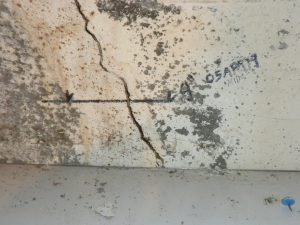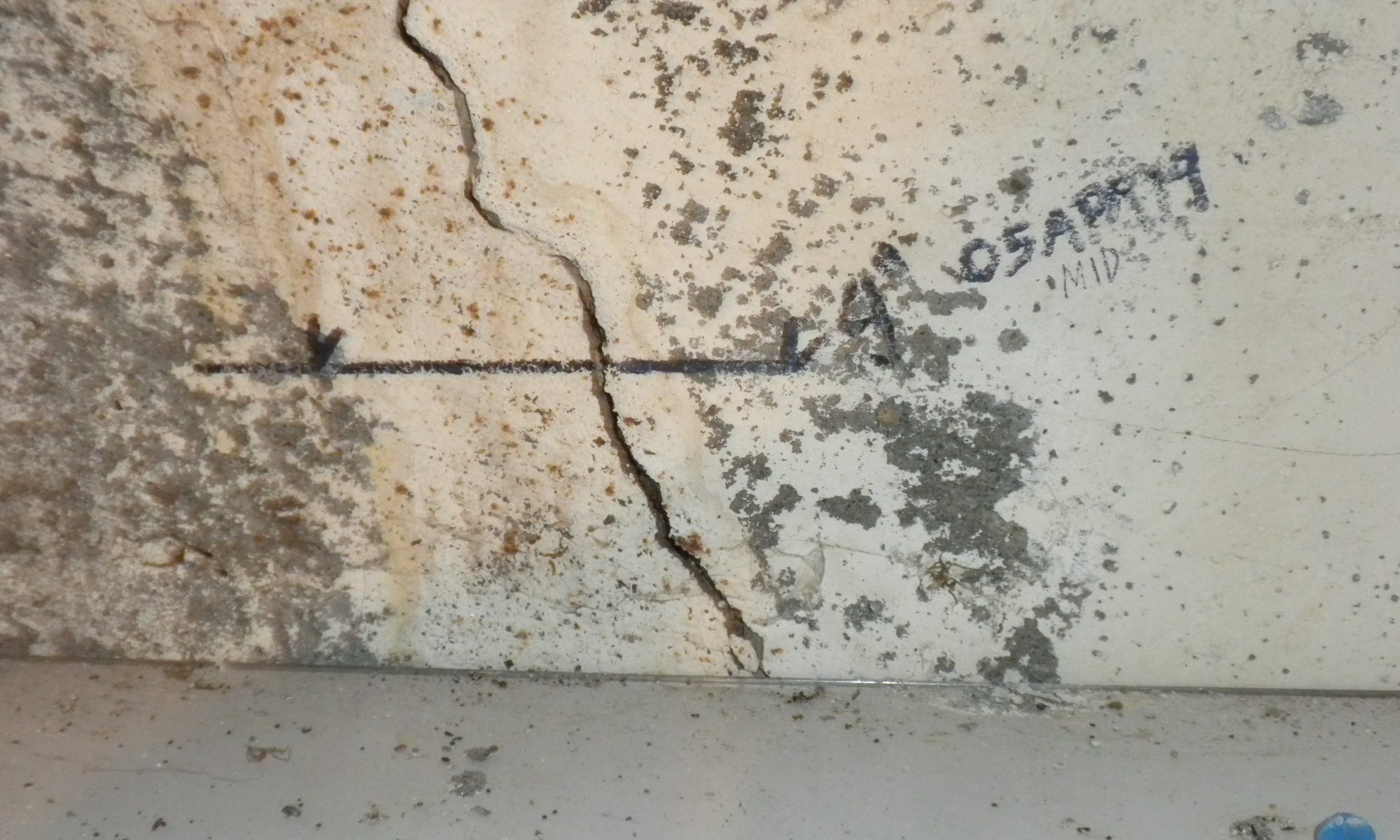
Cracks in basement walls and floors are among the most commonly found types of structural distress in buildings, especially houses. However, many homeowners do not know whether the cracks in their basement are problematic, if they are aware of them at all.
To understand why cracks form, you must first understand that structures and their components move. They compress, extend and bend under applied load. There are also forces internal to elements of structures resulting from the behavior of the material or how the element was made. Most structural materials expand with increased heat and moisture and contract in cold and dry conditions. In addition, Portland cement-based materials, like concrete, concrete masonry and certain types of mortar, shrink as they cure. Cracks occur when a structural element made of a brittle material is subjected to an external or internal force greater than its strength.
Basement walls and floors are typically constructed of masonry and concrete, which are brittle materials. For larger buildings, these elements are often reinforced with steel to control cracking and may be detailed to allow movement, thus preventing forces due to expansion and contraction. Houses, however, are usually of light construction and historically have been built using traditional methods and materials that were known to perform adequately under normal circumstances but are not as well detailed as construction performed to modern codes. Consequently, many homes built in the early and mid-twentieth century were built with concrete and concrete masonry, without reinforcement or joints. This is one of the underlying causes of cracking.
Different types of forces produce different types of cracks. The width and direction of cracks are indicative of the movement to which the cracked element was subjected. A few examples:
- Expansion and contraction typically cause vertical cracks in walls, that are usually narrow and at a somewhat regular spacing, although more complicated patterns can occur in slabs.
- Differential foundation settlement will often produce diagonal crack and, sometimes, vertical cracks at the corners of a basement.
- Horizontal cracks in the bottom half of a basement wall may indicate that it has been overloaded by soil and/or water pressure.
So what should you do if there are cracks in your basement walls and slab? This will depend on the severity of the cracking and the intended use of the basement space (Note: consult with an architect before changing the occupancy of a basement). If the cracks are narrow and not causing excessive moisture infiltration, it may be acceptable to leave them as is. For more severe cracking it is necessary to understand whether the cause of the cracking represents a structural problem. Non-structural cracks can be sealed to varying degrees of reliability depending on what you are willing to spend. If the cracks are structural, however, especially if wall cracks are accompanied by visible bowing or movement of the walls, it is necessary to understand their cause, whether they are growing and whether they could compromise the structural integrity of the building as a whole. When in doubt, you should retain a forensic structural engineer with foundation experience to try to determine the cause of cracking and to work with you and your contractor to develop repair options.
The information and statements in this document are for information purposes only and do not comprise the professional advice of the author or create a professional relationship between reader and author.



One Reply to “Why There Are Cracks in Your Basement”
Comments are closed.